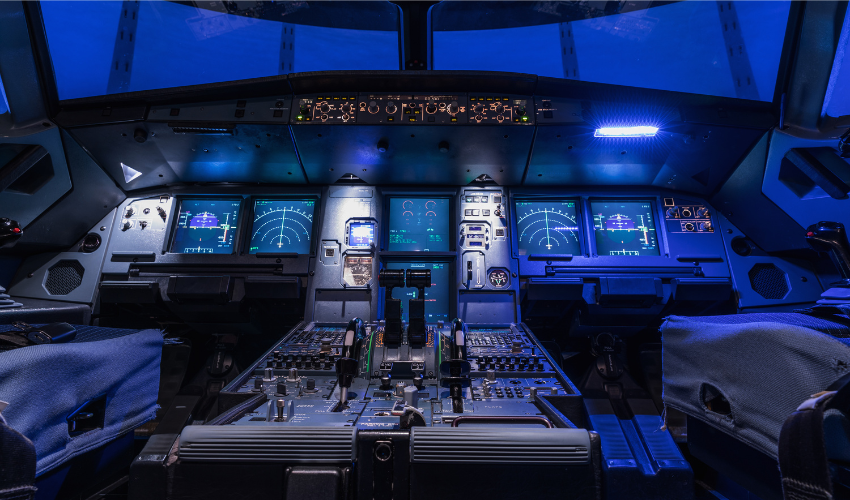The modern aviation industry is being transformed significantly due to advancements in technology. One of the integral components driving this transformation is the use of embedded systems in aerospace. These systems are critical in ensuring efficiency and safety in aviation operations. As the demand for more sophisticated aircraft grows, manufacturers increasingly rely on embedded systems to meet these demands.
Embedded systems are essentially computer systems designed for specific control functions within a larger system. In aerospace, they ensure that various aspects of an aircraft’s operations are seamless and reliable, from navigation to controlling engines and auxiliary systems. These systems play an essential role in both commercial and military aviation, contributing to enhanced performance, greater safety measures, and improved fuel efficiency.

Understanding Embedded Systems in Aerospace
At the core of embedded systems’ importance in aerospace is their ability to process large amounts of data in real-time to enable precise and timely decision-making. These systems are tasked with handling intricate procedures such as flight control, engine performance, environmental control, and communication.
In the world of aerospace, every second counts. Therefore, maintaining the reliability of these systems is not just necessary, but essential. The integration of embedded systems in aircraft involves extensive testing and validation processes to ensure optimal functionality and security against potential cyber threats.
The Role of Embedded Systems in Avionics
The application of embedded systems in aerospace is prominent in avionics, which refers to the electronic systems used on aircraft, artificial satellites, and spacecraft. Avionics systems carry out myriad functions such as navigation, flight-control, and display systems management.
For example, Boeing and Airbus aircraft heavily depend on advanced avionics embedded systems that enhance pilot situational awareness and automate complex tasks. This not only improves safety but also reduces workload for pilots, allowing them more time to manage unplanned situations.
Benefits of Embedded Systems in Aerospace
One of the most remarkable benefits of utilizing embedded systems in aerospace is increased operational efficiency. With real-time processing capabilities, they ensure that all systems work cohesively, resulting in lower risk of malfunctions.
Moreover, embedded systems contribute to fuel efficiency by optimizing engine performance and using advanced algorithms to regulate fuel consumption. This is crucial for both the environmental impact and the economical operation of airlines.
Furthermore, these systems enhance the safety of flights by employing real-time data analytics to monitor aircraft performance continuously. In the event of any discrepancies, they trigger alerts for timely intervention.
Embedded Systems in Space Exploration
Beyond commercial aviation, embedded systems in aerospace also play an essential role in space exploration missions. Spacecraft and satellites rely heavily on these systems for navigation, data collection, and communication with ground control.
Take, for instance, the Mars Rover, which is equipped with sophisticated embedded systems that allow it to carry out complex tasks autonomously while on the Martian surface. These systems enable the rover to gather valuable data and transmit it back to Earth for further analysis.
Challenges Facing Embedded Systems in Aerospace
Despite the myriad of benefits, integrating embedded systems in aerospace brings about challenges as well. One significant challenge is ensuring the system’s security against cyber threats. With increased connectivity, aircraft are susceptible to potential hacking, necessitating robust cybersecurity measures.
Moreover, the complexity of developing these systems requires significant investment in research and development. This entails collaboration between software engineers, electronics experts, and aviation specialists to create systems that can endure the rigors of aviation conditions.
The Future of Embedded Systems in Aerospace
As technology continues to advance, we can expect the role of embedded systems in aerospace to expand even further. Upcoming trends include the integration of artificial intelligence (AI) and machine learning to enhance the self-learning capabilities of aircraft systems.
AI-driven embedded systems will likely improve predictive maintenance by analyzing data patterns to forecast potential equipment failures. This not only enhances safety but also reduces maintenance costs.
Additionally, there is a growing trend towards the use of future technologies like the Internet of Things (IoT), where connected systems offering real-time updates will become more prevalent in aviation.
Conclusion
The role of embedded systems in aerospace is undeniably crucial in shaping the future of aviation and space exploration. These systems contribute significantly to operational efficiency, safety, and environmental sustainability. As technology evolves, the reliance on embedded systems will continue to grow, promising a future where aerospace technology becomes more advanced and integrated than ever before.

FAQs
What are embedded systems in aerospace?
Embedded systems in aerospace are specialized computer systems used to control various functions within aircraft and spacecraft, ensuring efficient and safe operations.
How do embedded systems enhance aerospace safety?
They enhance safety by providing real-time data processing and analysis, enabling timely decision-making and alerting pilots to any discrepancies for immediate action.
What future trends are expected in embedded systems in aerospace?
Future trends include the integration of AI, IoT, and machine learning to improve predictive maintenance, self-learning capabilities, and real-time updates.


